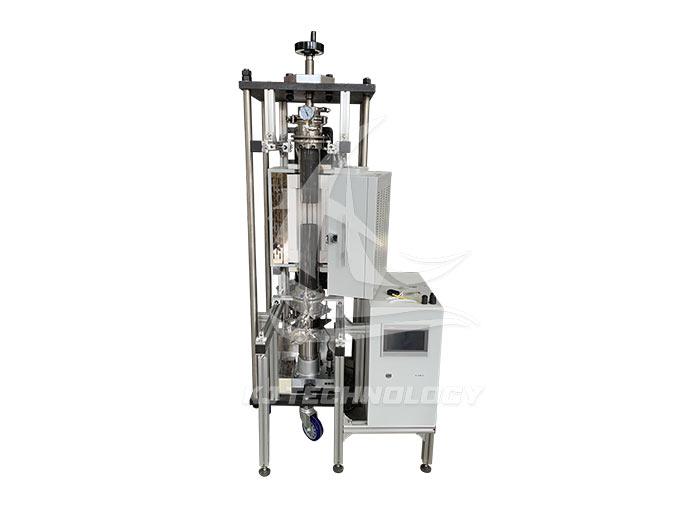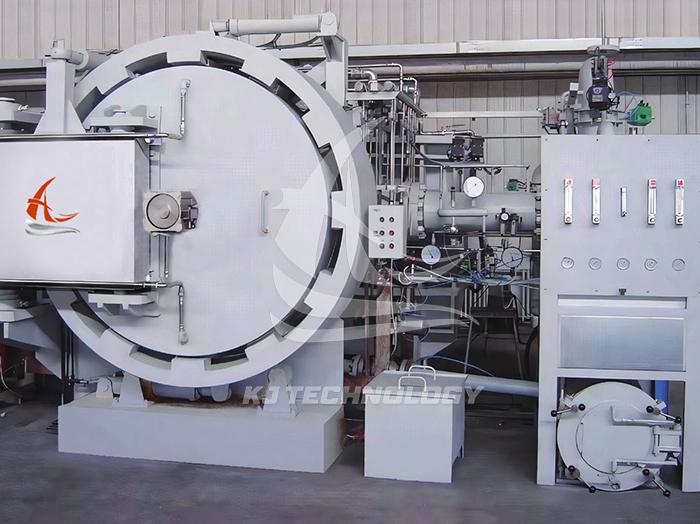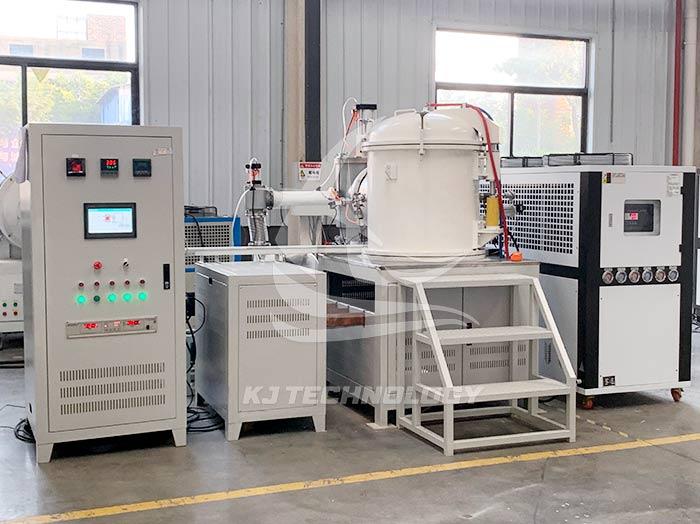Customized heat treatment vacuum furnace cannot achieve vacuum degree
 06-16-2025 Author: KJ technology
06-16-2025 Author: KJ technology
The vacuum degree of the customized heat treatment vacuum furnace cannot be reached, which may be caused by various reasons such as vacuum pump failure, sealing problem, leakage, heating element or control system failure. The following are specific analysis and solutions:
Vacuum pump related issues
Pump oil problem: Pump oil pollution, insufficient or too thin, can cause poor operation of the vacuum pump, thereby affecting the vacuum degree. The vacuum pump needs to be cleaned and replaced with new vacuum pump oil.
Vacuum pump failure: The vacuum pump itself may be damaged, overheated, or the gap may be too small due to the expansion of the components, which may prevent the vacuum degree from being drawn. Replace the pump with a new one, strengthen the cooling of the pump, check if the power supply is normal, repair or replace damaged vacuum pump parts.
Insufficient pumping capacity: Mechanical pumps with low pumping rate or low vacuum degree, Roots pumps with low pumping rate or low vacuum degree, K-type high vacuum oil diffusion pumps with low pumping rate, etc., can all lead to the inability to pump vacuum degree. Please refer to the user manual of the vacuum pump to troubleshoot the issue.
Sealing and leakage issues
Sealing component issues: Aging, corrosion, or damage to the sealing components, loose connections at pipeline joints, air leakage from electromagnetic valves, pipe joints, vacuum pump suction valves, and sealing gaskets around the working chamber, and detachment of the suction valve O-ring can all cause vacuum leaks. It is necessary to inspect and replace aging and broken seals to ensure good sealing. Check the pipeline connections, solenoid valves, pipe joints, etc., and repair or replace them. Reinstall the suction valve O-ring.
Furnace or workpiece contamination: Furnace or workpiece contamination may cause gas release and affect vacuum degree. Regularly clean the furnace body and workpieces to maintain cleanliness.
Leakage detection: Static pressure rise method can be used to determine whether the vacuum system is leaking. That is, after the container is pumped to a certain pressure, the vacuum valve is closed to separate the pumped container from the pump. The corresponding vacuum gauge is used to measure the pressure in the container at regular intervals and draw the pressure time curve. If the curve is a straight line parallel to the horizontal axis, it indicates that the container is neither leaking nor releasing air, and the vacuum degree cannot be increased due to poor working conditions of the pump; If the curve starts to rise rapidly, then the rate of rise slows down, and finally reaches equilibrium, it indicates that the container is not leaking gas but rather the lining material is releasing gas; If the curve increases linearly with time, it indicates that the container is leaking gas while the lining material is not; If the curve starts to rise rapidly, then slows down, and finally forms a straight line with a slope of Δ P/Δ T, it indicates that the container has both leakage and deflation.
Heating element and control system issues
Heating element issues: Aging, damage or poor contact of the heating element, burning of the heating strip, burning of the heating wire, etc., can affect the normal operation of the vacuum furnace, thereby affecting the vacuum degree. Check the connection and resistance of the heating element, repair or replace damaged heating elements.
Control system issues: Damage or improper setting of temperature controllers, disconnection or short circuit of thermocouple wires, malfunction of temperature control instruments, damage or poor contact of control system power lines, damage or aging of internal components in the control system, software failures, etc., can all lead to the inability to draw vacuum. It is necessary to check and adjust the settings of the thermostat, replace or reconnect thermocouples, repair the control system, check the power supply circuit of the control system to ensure normal power supply, check and replace damaged components inside the control system, and update or reinstall the control system software.
Other issues
Oil return valve blockage: Oil return valve blockage can affect the normal operation of the vacuum pump, resulting in the inability to draw vacuum. The oil return valve needs to be removed for cleaning.
Cooling system issues: Blocked cooling water pipelines and insufficient cooling water supply can affect the cooling effect of the vacuum pump, thereby affecting the vacuum degree. It is necessary to check whether the cooling water pipeline is unobstructed, ensure sufficient cooling water supply, and clean up blockages.
Power supply issue: Unstable power supply voltage may cause the vacuum furnace to malfunction and affect the vacuum degree. A voltage regulator can be installed to ensure stable power supply voltage.








